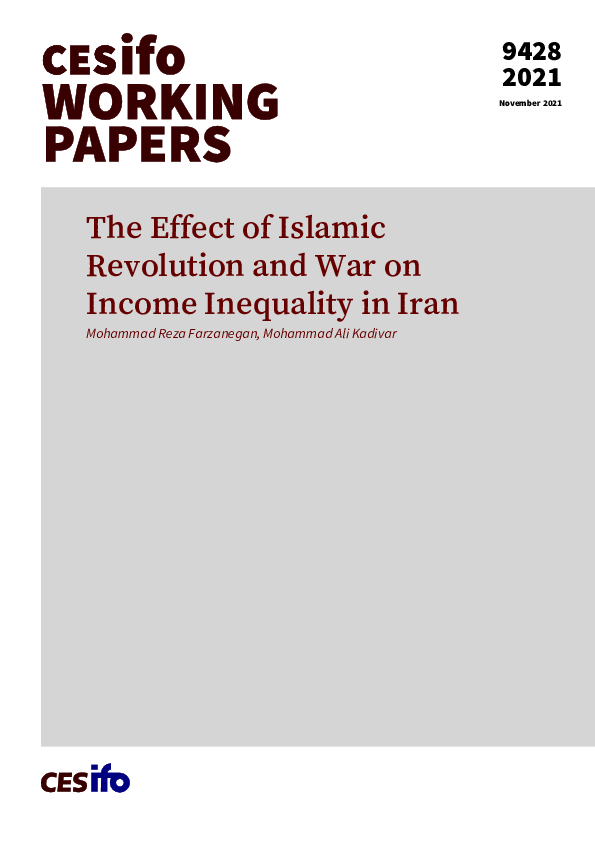The Effect of Islamic Revolution and War on Income Inequality in Iran
CESifo, Munich, 2021
CESifo Working Paper No. 9428

Existing research has pointed to the decreasing effect of revolutions and wars on income inequality. It is unclear whether this reduction is the result of ongoing changes within countries before revolutions and wars or if the results are standalone effects. In this study, we focus on the case of the Iranian Revolution of 1979 and the subsequent Iran-Iraq war from 1980 to 1988. We use the synthetic control method to study the effect of revolution and war on changes in income inequality levels. Had there been no revolution and war in Iran, how would income inequality have developed? Utilizing the synthetic control method, we created a counterfactual Iran that reproduces the socioeconomic characteristics of Iran before the Islamic revolution. Then we compare the income inequality of the counterfactual Iran, without the revolution and war, to the factual Iran with a new political regime, for the period of 1970-1988. Our results, based on two different indicators of Iran’s Gini, show a statistically significant effect of the revolution and war on reducing income inequality. Over the entire 1979–1988 period, on average and per year, the Gini index of Iran was reduced by approximately 3 times of the standard deviation of this index. The main findings are robust to a series of placebo tests.
Public Choice
Empirical and Theoretical Methods